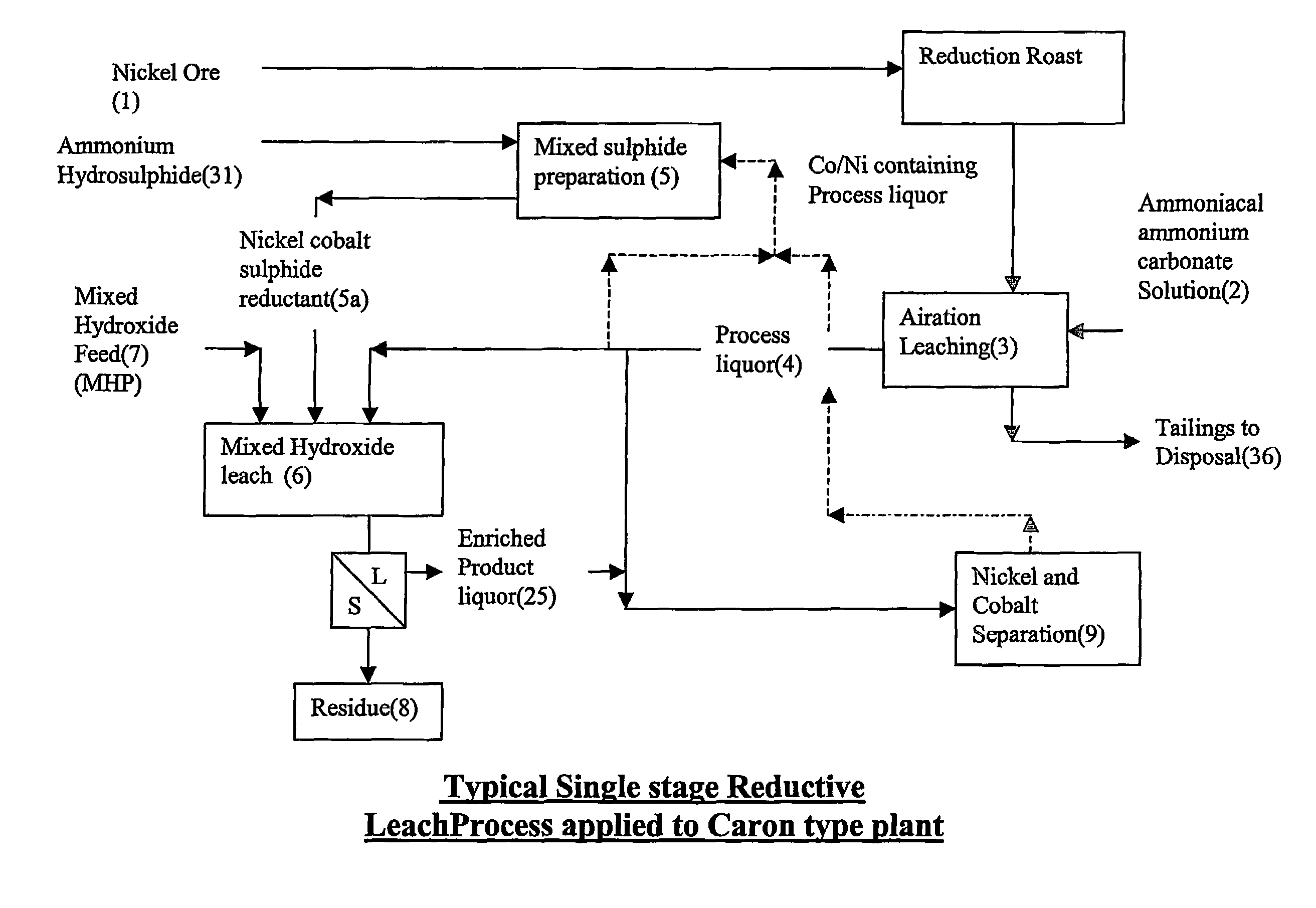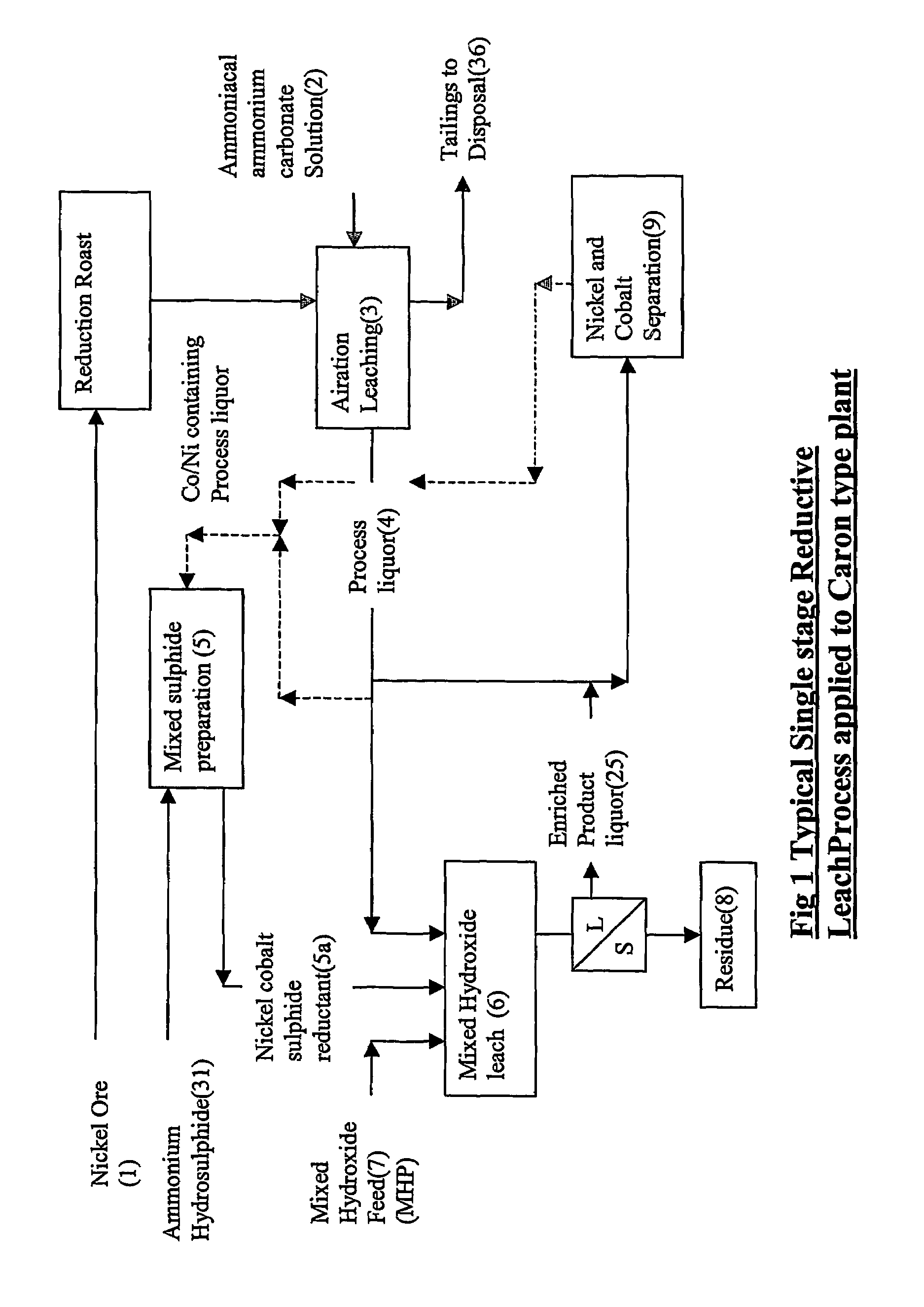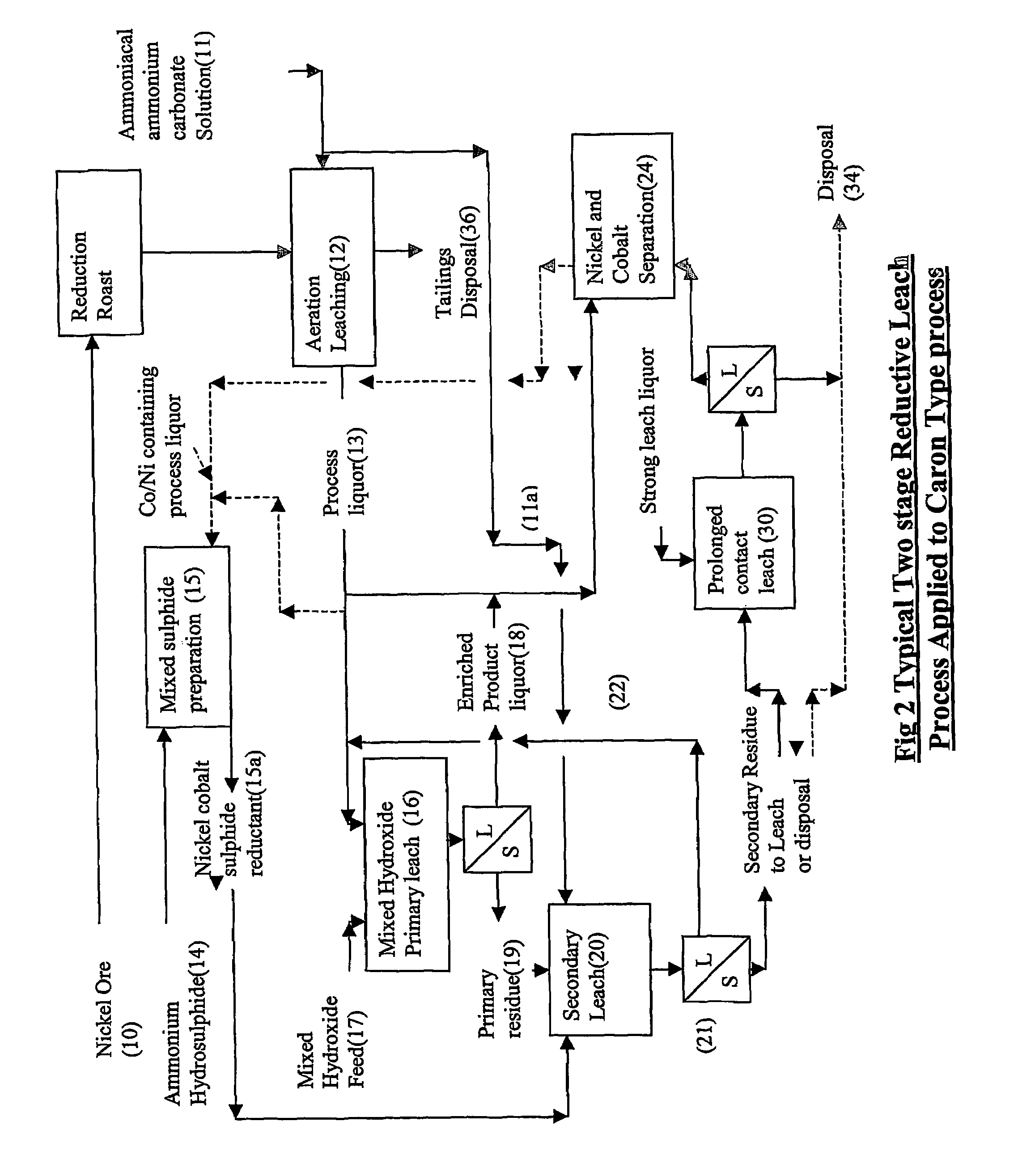Reductive ammoniacal leaching of nickel and cobalt bearing materials
a technology of ammoniacal leaching and nickel and cobalt, which is applied in the direction of solvent extraction, nickel compounds, separation processes, etc., can solve the problems of increasing the difficulty of dissolution, not extracting all nickel and cobalt, and increasing the amount of nickel and cobalt remaining in the leach residu
- Summary
- Abstract
- Description
- Claims
- Application Information
AI Technical Summary
Benefits of technology
Problems solved by technology
Method used
Image
Examples
example 1
[0073]Tests have been conducted with hydroxylamine sulphate which is commonly used as a reductant, to illustrate the concept of reductive leaching in ammoniacal solutions.
[0074]Table 1 shows the dissolution from a commercially produced mixed nickel / cobalt hydroxide, in an ammoniacal ammonium carbonate solution, with and without hydroxylamine sulphate addition.
[0075]
TABLE 1Effect of Hydroxylamine Addition on Hydroxide LeachingControl LeachSolidsFeed MixedHydroxylamineResidue with noCompositionHydroxideLeach Residuereductant% Ni37.22.210.3% Co3.80.462.9% Mn6.835.535.5Ni dissolution (%)9996Co dissolution (%)9890Lixivant composition: 93 g / L NH3, 68 g / L CO2Leach temperature: 30° C.Leach time: 45 minutesSolids: equivalent to 10 g dry hydroxide (4 g (Ni + Co) / 500 mL lixivantHydroxylamine dosage: 4.50 g of (NH2OH)2•H2SO4 / test
[0076]Table 2 shows the dissolution from a mixed nickel cobalt hydroxide leach residue, after two prior stages of leaching in ammoniacal ammonium carbonate liquors.
[007...
example 2
[0080]In the following example, a mixed cobalt nickel sulphide was produced by treating a typical ‘Caron’ process product liquor with ammonium hydrosulphide for the leaching of either mixed nickel / cobalt hydroxide in a single stage leach, or the residue from a previous ammoniacal ammonium carbonate leach of mixed hydroxide precipitate (MHP) in the two stage leach.
[0081]Three cases have been tested:
[0082]1 ) a single stage leach in product Liquor with sulphide as a reductant,
[0083]2) primary leach in Product Liquor (without sulphide as a reductant, and no aeration), followed by a secondary leach of the first stage residue with the mixed sulphide as a reductant, or
[0084]3) a tertiary leach / prolonged contact in strong ammoniacal ammonium carbonate solution.
[0085]In either the single stage leach with sulphide (case 1), or the two stage leach with sulphide (case 2), the sulphide leach consisted of a 30 minute anaerobic leach, followed by an aerobic leach (the latter achieved by oxygen sp...
example 3
[0092]In a further example, the residue from the primary ammoniacal ammonium carbonate pilot plant leach of a mixed nickel cobalt hydroxide intermediate was subjected to a secondary reduction leach test, using cobalt nickel sulphide reductants produced from Caron process ammoniacal ammonium carbonate nickel / cobalt solutions by different techniques.
[0093]The secondary leach tests were carried out at 55° C., and consisted of a 30 minutes anaerobic leach following reductant addition, followed by aerobic sparging for 240 minutes.
[0094]The mixed hydroxide intermediate analyzed Ni 35%, Co 3.67%, and Mn 6.47%. The primary leach residue used in the tests analyzed Ni 9.59%, Co 2.49%, and Mn 24.6%.
[0095]The results of these tests demonstrate that mixed cobalt nickel sulphide reductants of similar effectiveness, and with a range of cobalt / nickel ratios can be produced using ammoniacal ammonium carbonate nickel and cobalt solutions from different points in the Caron process to suit the process ...
PUM
| Property | Measurement | Unit |
|---|---|---|
| temperature | aaaaa | aaaaa |
| residence time | aaaaa | aaaaa |
| residence time | aaaaa | aaaaa |
Abstract
Description
Claims
Application Information
 Login to View More
Login to View More - R&D
- Intellectual Property
- Life Sciences
- Materials
- Tech Scout
- Unparalleled Data Quality
- Higher Quality Content
- 60% Fewer Hallucinations
Browse by: Latest US Patents, China's latest patents, Technical Efficacy Thesaurus, Application Domain, Technology Topic, Popular Technical Reports.
© 2025 PatSnap. All rights reserved.Legal|Privacy policy|Modern Slavery Act Transparency Statement|Sitemap|About US| Contact US: help@patsnap.com



